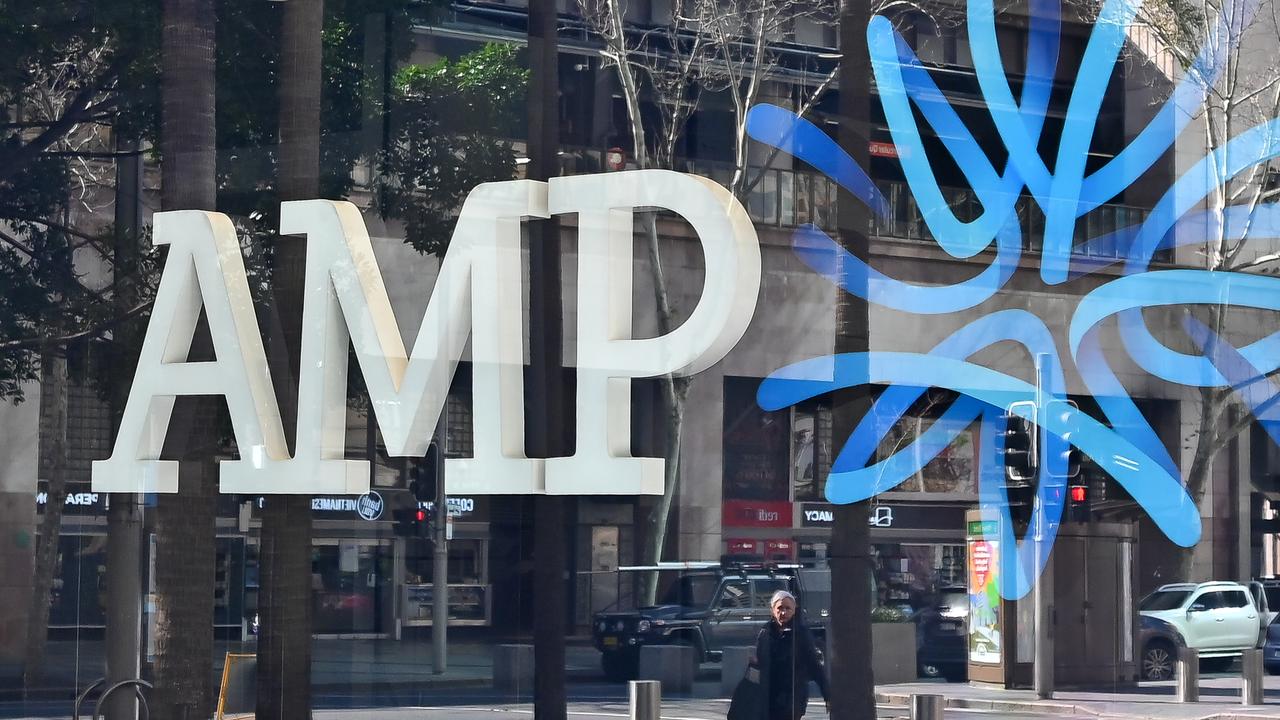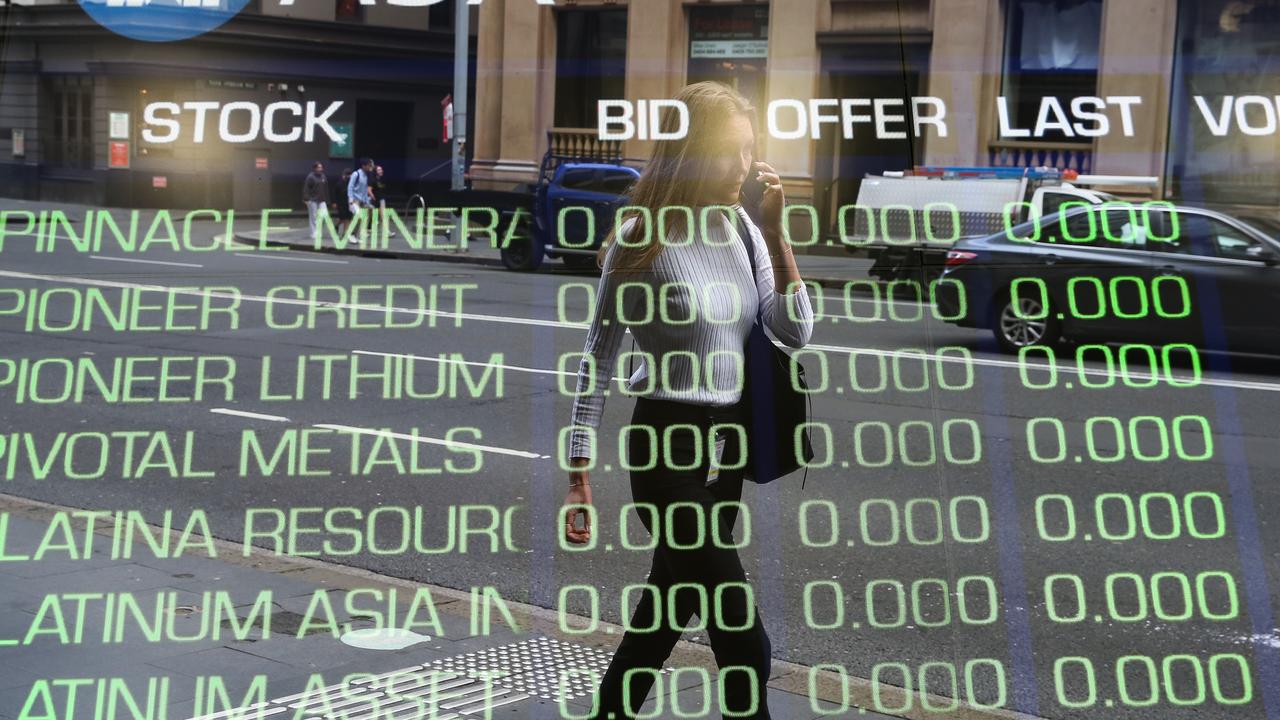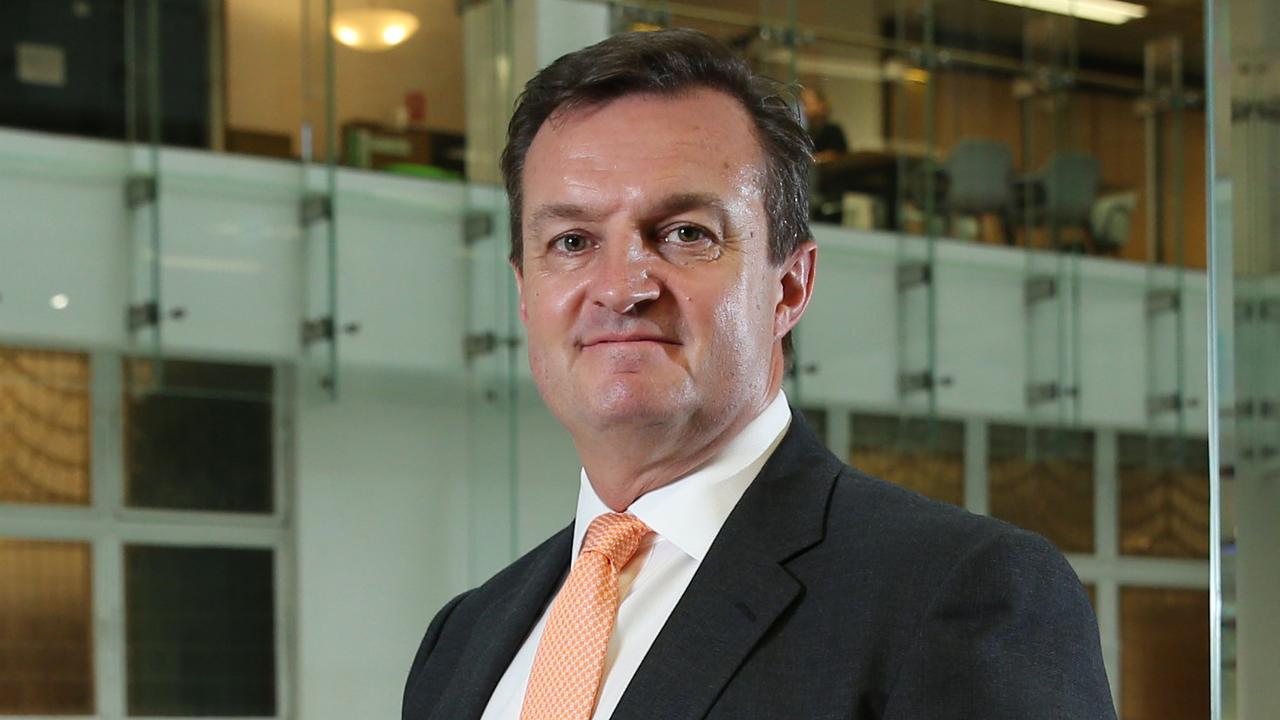Stocks soared in 2024 but in the final weeks the US Fed threatened to take the punch bowl away
Overall 2024 was a good year for stocks but a late shift away from more interest rate cuts by the US Federal Reserve sparked a bout of risk aversion in the week before Christmas.
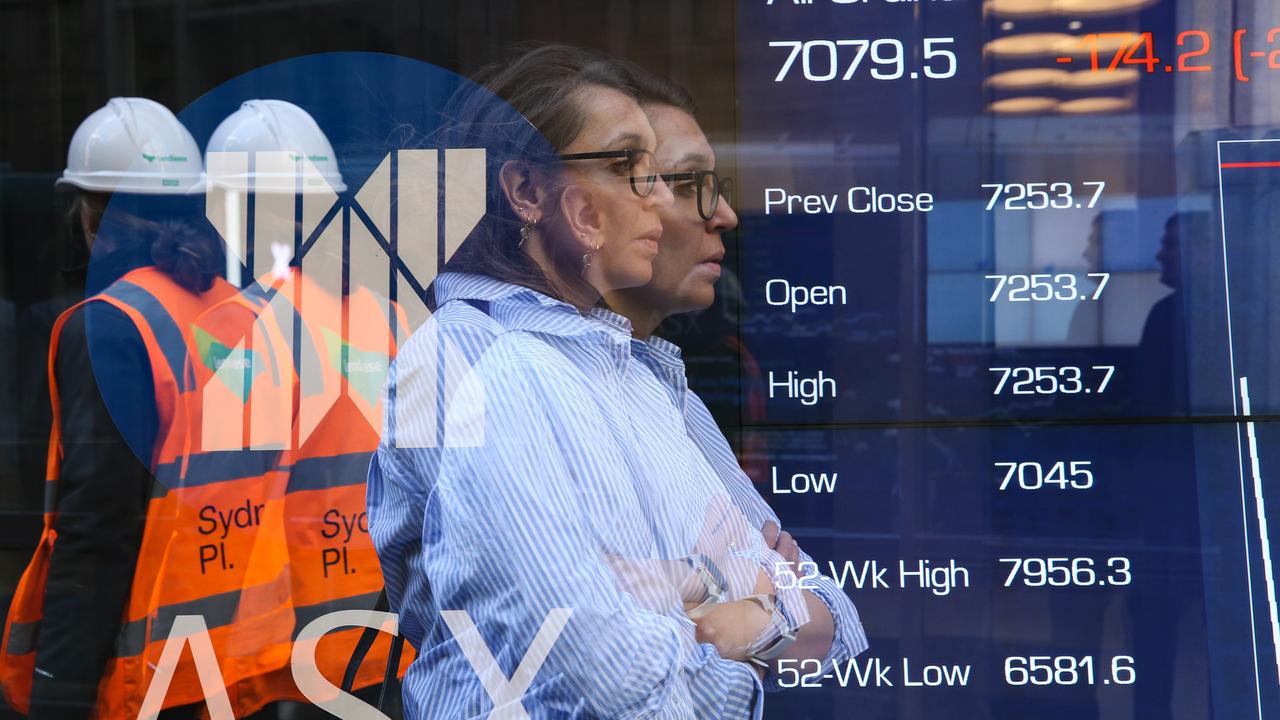
Business
Don't miss out on the headlines from Business. Followed categories will be added to My News.
The Australian sharemarket surged in 2024, adding nearly $200bn to the value of the benchmark ASX 200 index, despite a retreat in December.
Overall it was another good year for stocks as a soaring US market pulled valuations higher, but gains faded late in the year as the US Federal Reserve shifted away from rate cuts.
In the week before Christmas, stocks suffered their biggest falls in months.
The ASX 200 index closed off the 2024 calendar year with a 7.5 per cent gain, beating average annual gains of 3.8 per cent in the past decade and 5.6 per cent in the past 20 years.
It added $196.5bn to the value of the benchmark index.
But that was dwarfed by Wall Street’s performance, with the S&P500 Index on track to return around 24 per cent, and the Nasdaq up nearly 30 per cent on Friday night (AEDT).
Locally, after hitting a record high of 8514.5 points in early December, Australia’s benchmark ASX 200 index fell more than 4 per cent before year end, with the sell-off accelerating after the US Federal Reserve’s FOMC meeting.
But even with the highest interest rates domestically since 2011 and a fall in earnings estimates this year, the Australian stockmarket still fared relatively well in 2024, thanks to a strong US market.
It followed a local gain of 7.8 per cent in 2023, triggered by the AI boom after the launch of ChatGPT, as fiscal stimulus supported the US economy and central banks ended their fastest interest rate hikes in decades.
The second consecutive year of solid returns came after the ASX 200 index lost 5.5 per cent in 2022, when valuations were crushed by soaring interest rates as central banks fought an inflation outbreak caused by supply disruptions and unprecedented stimulus during the pandemic.

Including dividends, the Australian stockmarket achieved a total return of 11.4 per cent in 2024. That compared to a total return of 12.4 per cent in 2023.
It was the second consecutive year of diminishing total returns, which reached negative territory in 2022 after a peak of 17.2 per cent in 2021. That was a year of unprecedented fiscal and monetary policy stimulus during the Covid pandemic.
As usual, the US market had an overriding influence on the Australian market in 2024.
In the US, the AI boom drove a 50 per cent rise in the so-called “Magnificent 7” tech giants, led by a 180 per cent rise in Nvidia. The AI poster-child achieved a $US3 trillion-plus market capitalisation.
At times during the year Nvidia displaced Apple as the world’s most valuable company.
A shift late in the year away from further interest rate cuts by the Federal Reserve sparked a bout of risk aversion before year-end that led investors to lock in profits in their best performing stocks.
Volatility spiked and the US 10-year bond yield hit six-month highs after a hawkish shift by the powerful US Federal Open Market Committee after their December meeting.
As was broadly expected by investors, the FOMC announced another widely expected interest rate cut and members dialled back the pace of rate cuts expected in 2025.
Ahead of the FOMC meeting the US 10-year bond rose 20 basis points and the Dow Jones Industrial Average suffered its longest string of losses since the 1970s.
However, in hindsight the market was too complacent about potential surprises from the meeting.
The VIX index of implied volatility on S&P 500 options was well below its long-term average level.
The decision to cut rates wasn’t unanimously supported and the median core PCE inflation forecast of FOMC members for 2025 was revised up from 2.2 to 2.5 per cent.
There was also a distinctly hawkish shift from chair Jerome Powell in his post-meeting press conference. “From now, we are in a place where the risks really are balanced and we need to see progress on inflation. And that’s how we’re thinking about it,” he said.
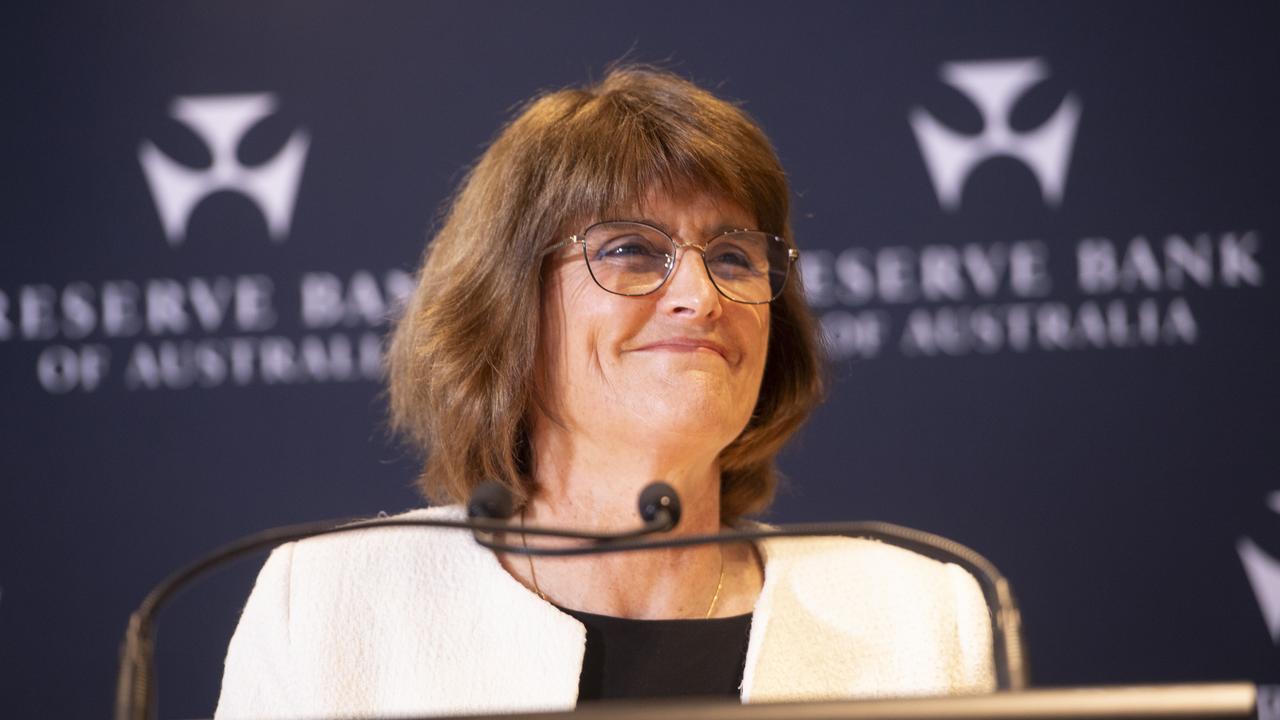
Asked how much of the 50 basis point reduction in average rate cut expectations by FOMC members was due to expectations of inflationary fiscal policy from the incoming Trump Administration, Mr Powell said some members took a “very preliminary step and start to incorporate highly conditional estimates of economic effects of policies into their forecast at this meeting”.
Uncertainty about government policy had increased FOMC member’s uncertainty about inflation and it was “common sense thinking that when the path is uncertain you go a little bit slower”.
But the ASX 200 almost matched its long-term average total return of 13 per cent, despite a fall in corporate earnings and the highest local interest rates in 13 years
By early December, the 12-month forward price-to-earnings valuation of the ASX 200 had swelled above 18 times, hitting levels not seen since early 2021, when interest rates were near zero and earnings estimates were rapidly recovering from pandemic-era lows.
But after the pre-Christmas sell-off, the PE multiple had fallen to 17 times.
A stretched valuation and weak earnings growth outlook may limit upside potential for the ASX 200 in 2025, particularly while the Reserve Bank continues to hold off on interest rate cuts.
Economists widely expect the Reserve Bank, led by governor Michele Bullock, to start cutting interest rates by May.
But after a dovish shift by the RBA at its December meeting, the money market has more than fully priced in a 25 basis point cut in the cash rate target by April and a cut is priced as a better than even chance by February. The cash rate has been at a 13-year high of 4.35 per cent since November 2023.
At its December meeting the RBA board appeared to be preparing for interest rate cuts, saying it is “gaining some confidence that inflation is moving sustainably towards target.”
Meanwhile, in 2024 crypto was the best performing asset class for a second year running.
Bitcoin – the world’s leading cryptocurrency – more than doubled again, hitting a record high of $US108,000 before fading along with other risk assets after the hawkish pivot by the Fed.
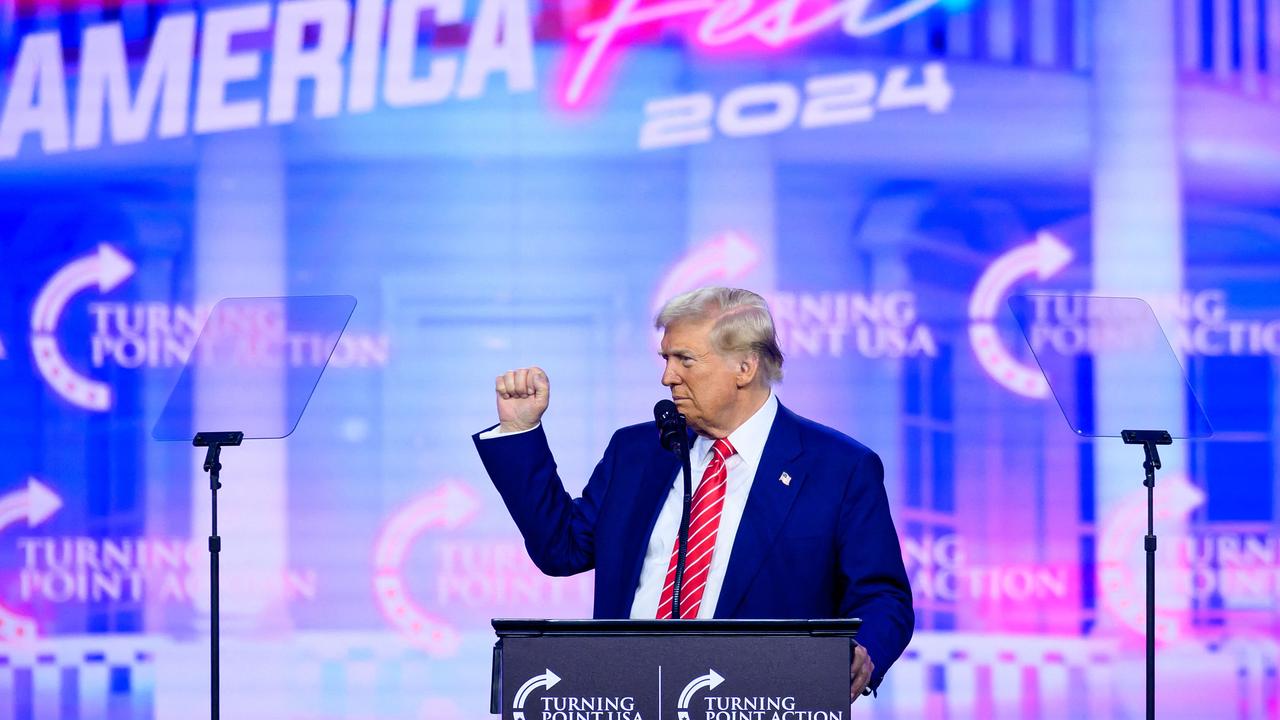
More than half of the rise in bitcoin came after Donald Trump won the election on November 5th, vowing to sack SEC chairman Gary Gensler and make the US the “crypto capital of the world”.
Gold had a good year, with a record high of $2790.1 per ounce and a 26 per cent rise amid large-scale buying by central banks after Russia had its foreign currency reserves frozen over its invasion of Ukraine.
Industrial commodities were mixed. Iron ore and crude oil prices fell but copper rose about 5 per cent and hit a record high of $US11,04.50 a tonne in a rollercoaster year.
The Australian dollar fell more than 8.8 per cent and hit a two-year low of US61.99c as the US dollar soared on economic resilience and expectations that Donald Trump’s plans for fiscal stimulus and tariffs could support US interest rates and weigh on the exchange rates of its trading partners. At 5pm on Tuesday, it was buying US62.12c.
Private credit continued to boom and investment grade bond spreads were remarkably tight, which could hamper their performance if government bond yields continue to rise.
Fixed income was one of the weakest asset classes as US economic growth proved resilient, inflation was sticky, budget deficits were rising and Trump’s policy plans could stoke inflation.
Australia’s 10-year bond yield rose from about 3.95 to 4.5 per cent.
Despite a weak December, super funds delivered their highest returns since 2021.
The median balanced option returned 11.5 per cent for 2024, with most options topping 10 per cent on average, according to industry researcher Super Ratings.
Looking ahead, the major “known unknowns” include the shape and sequencing of Donald Trump’s policies after his inauguration on January 20, the magnitude and timing of interest rate cuts by central banks including the US Federal Reserve and the Reserve Bank of Australia, and the extent of China’s fiscal and monetary stimulus, most of which is expected to be announced in March.

Geopolitics is again set to feature heavily with the Hamas-Israel and Russia-Ukraine wars, a power vacuum in Syria after the fall of the Assad regime and expectations that Trump will more strictly enforce sanctions against Iran than his predecessor.
“Shares remain torn between the negatives of rich valuations, higher bond yields, uncertainties as to how much central banks will cut rates or, in Australia’s case, when the RBA will cut, uncertainties around Trump’s trade policies and geopolitical risks on the one hand versus the positives of global central banks being in an easing cycle, Goldilocks economic conditions, particularly in the US, optimism that Trump will reinvigorate the US economy and prospects for stronger profits ahead in Australia,” said AMP’s head of investment strategy and chief economist, Shane Oliver.
“Our overall assessment remains that the trend is still up, including for Australian shares, but expect a more volatile and constrained ride over the year ahead.”
Dr Oliver expects global and Australian shares to return a far more constrained 7 per cent in 2025.
“Stretched valuations after two strong years, the ongoing risk of recession, the likelihood of a global trade war and ongoing geopolitical issues will likely make for a volatile ride in 2025, with a 15 per cent correction somewhere along the way highly likely,” he said.
“But with central banks still cutting rates, the RBA expected to start cutting in the first half 2025, and prospects for stronger growth later in the year supporting profits should still see OK investment returns.”
Dr Oliver expects the ASX 200 to end 2025 at around 8800 points.
Originally published as Stocks soared in 2024 but in the final weeks the US Fed threatened to take the punch bowl away



